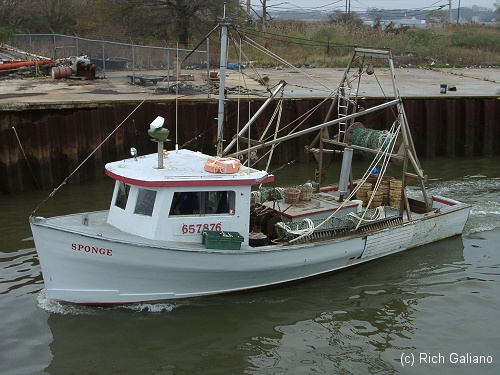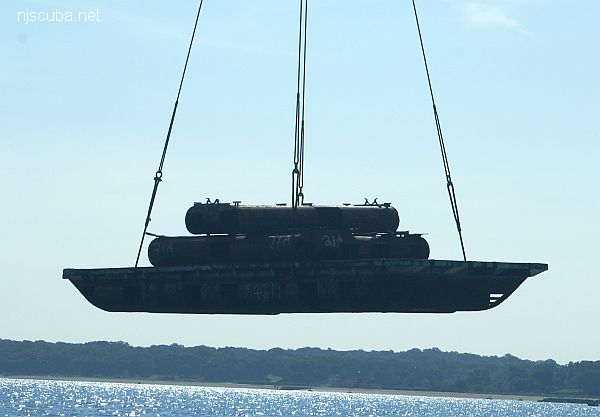Commercial Fishing Ports
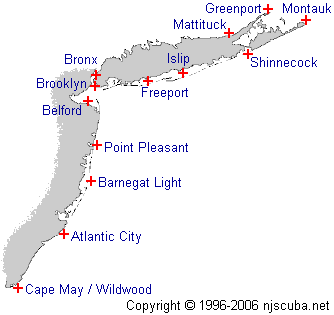
Commercial fishing in New Jersey is centered around several small ports, each of which has a particular type of processing or handling facility. Without the necessary facilities onshore, the boats would have no place to take their catch. Belford, in Raritan Bay, supports a fleet of long-liners and seiners with a fish processing plant. Point Pleasant is the locus for shellfisheries and supports a large fleet of resident and transient clam dredges. Barnegat Light has mainly long-line fishing boats and scallopers, while Atlantic City and Cape May have more clammers and trawlers. Lobster boats and head boats are found all over.
Belford
The port of Belford is located in the shelter of Sandy Hook on the northern-most section of the New Jersey coast. With ready highway access, ocean-fresh seafood harvested by the fishermen based in Belford can be in New York's Fulton market within an hour or to any of tens of millions of consumers in the same day it was caught.
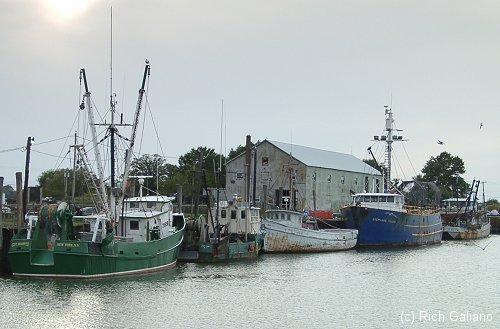
Many of the vessels berthed in Belford are owned by members of the Belford Fishermen's Cooperative, one of the most active fishermen's cooperatives on the Atlantic Coast. The fleet is composed of otter trawlers, gill-netters, lobster boats, and purse seiners. Many of the fishermen there rely on the "traditional" Mid-Atlantic mixed trawl fishery, having adjusted their fishing - and marketing - efforts to be in tune with the annual migrations of the silver and red hake, fluke, flounder, sea bass, and porgies that make up a large part of their harvest.
Not too many years ago Belford was home to a large fish meal and oil processing plant which utilized the menhaden stocks that are so plentiful in all of the Atlantic coastal waters. While this plant shut down fifteen or so years ago, there has been a recent resurgence in menhaden purse seining by boats out of Belford. Today, however, it is to supply menhaden to an expanding bait market.
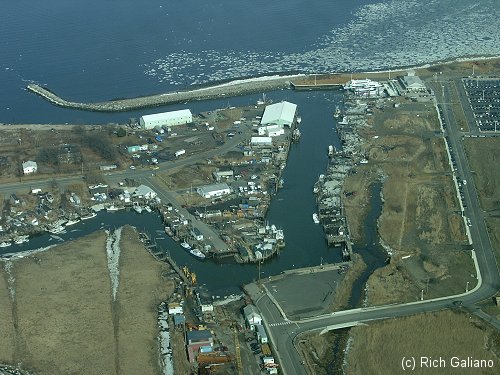
The co-op has a large, recently modernized retail market and a seafood restaurant that provides freshly caught seafood to the surrounding communities.
Point Pleasant
Located midway on the New Jersey coast, Point Pleasant could be used as a textbook example of a traditional fishing community existing in harmony with the surrounding tourist-dependent businesses. With a fleet made up of medium-sized otter trawlers and a few gill-netters, the Fishermen's Dock Cooperative has third-generation fishermen as active members. The Point Pleasant boats fish primarily local waters, making trips of from one to several days in duration and landing fresh, iced fish. The major species sought are fluke, squid, silver and red hake, and scallops.
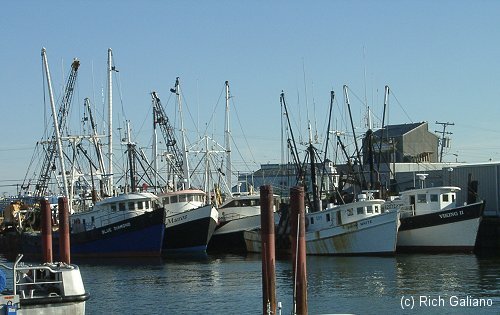
The very large surf clam fishery was pioneered in Point Pleasant and one of the first processing plants using steam shucking was built there. In recent years an increasing number of hydraulic dredge-equipped vessels have been targeting surf clams and ocean quahogs from Point Pleasant as well. Like Atlantic City, Point Pleasant no longer has any processing plants and the clams are trucked elsewhere after landing.
The Fishermen's Dock Cooperative on Channel Drive in Point Pleasant Beach is one of two active fishing cooperatives in New Jersey. Incorporated as a cooperative in the early 1950s, the Co-op (as it is known locally) is an integral part of the waterfront community of Point Pleasant Beach. Many of the Co-op's members are sons of the original founders. Several are third or fourth-generation commercial fishermen.
Barnegat Light
Barnegat Light is on the northern end of Long Beach Island. Located adjacent to what was the infamous Barnegat Inlet before a multimillion-dollar Corps of Engineers project brought its fierce currents somewhat under control, Barnegat Light's two commercial docks service a fleet that ranges from small, local day boats to globe-spanning longliners.
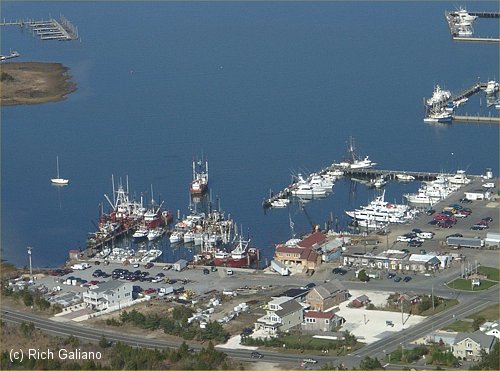
Several fishermen in Barnegat Light pioneered the deepwater tilefish fishery back in the 1970s and through a successful marketing campaign turned this delicious fish into the consumer's "poor man's lobster." Along with Montauk on the Eastern end of Long Island, Barnegat Light is still the center of this valuable fishery.
Barnegat Light is the home port of many members of the East Coast's long-line fleet. Targeting several species of tuna as well as swordfish, on their several week or longer trips Barnegat Light long liners routinely fish from the high seas from hundreds to thousands of miles away. Barnegat Light is also home to several state-of-the-art scallop vessels and a fleet of smaller, inshore gill-netters.
Atlantic City
Docked in the shadow of the casinos in the Marina section, Atlantic City's commercial fishing fleet focuses almost exclusively on surf clams and ocean quahogs. This specialized fishery, accomplished primarily by larger (70 to 150 feet in total length) vessels equipped with hydraulic dredges, provides much of the world's supply of minced clams and clam strips. With no clam processing facilities in Atlantic City, the clams landed there are trucked to plants in Southern New Jersey or on the Delmarva peninsula.
Cape May / Wildwood
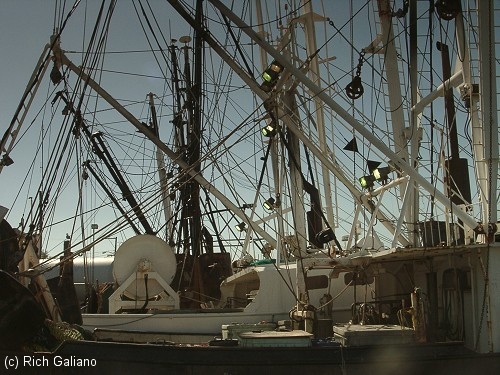
At the Southernmost tip of New Jersey - and almost as far south as Washington, DC - the combined port of Cape May/Wildwood is the largest in New Jersey and one of the largest on the East Coast. The center of fish processing and freezing in New Jersey, Cape May/Wildwood is the home port to some of the largest vessels fishing on the Atlantic coast and has led the way in developing new fisheries and new domestic and international markets for New Jersey seafood. Major Cape May fisheries focus on squid, mackerel, fluke, sea bass, porgies, lobsters, and menhaden. In addition to these, Wildwood boats are also in the surf clam/ocean quahog fisheries.
Like many Jersey Shore communities, much of Cape May's and Wildwood's economies are dependent on seasonal tourism - which is dependent both on the weather and the overall state of the economy. The year-round character of commercial fishing is a major factor in keeping these communities going in the off-season.
Text adapted from www.fishingnj.org - Nils E Stolpe
New York
Commercial fishing ports in New York are located along the north and south shores of Long Island, from Brooklyn and the Bronx in New York City to the eastern tip of the Island's north and south forks. New York's largest commercial fishing ports are Montauk, Shinnecock / Hampton Bays, and Greenport, all located on the East End of Long Island.
Montauk is New York's largest fishing port. Located some 120 miles east of Manhattan on the eastern tip of the south shore of Long Island, Montauk is strategically located near important fishing grounds. Fishing has been Montauk's chief industry since colonial times, and it continues to be an important part of its economy and traditions. Montauk's location, its large protected harbor on Lake Montauk, and its land-based support services provide the essential elements necessary for New York's largest commercial and sport fishing fleets to thrive and prosper.
Fulton Fish Market
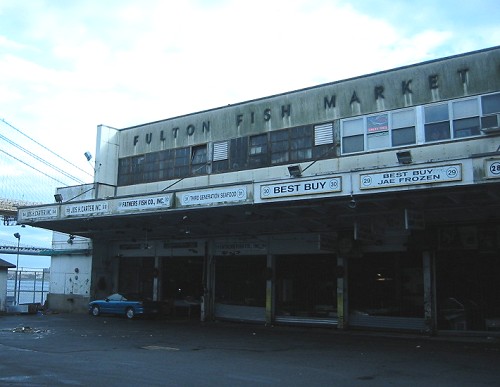
The Fulton Fish Market in Manhattan is the largest wholesale seafood market in the U.S. For over a century, seafood products from the entire Atlantic seaboard and other parts of the U.S. and the World have been shipped to Fulton Market for display and sale to retail stores and restaurants throughout the New York City metropolitan area.
Between 50 to 55 individual businesses are located at Fulton Market. Each business locates, buys, receives, displays, and then sells a variety of different seafood products to a range of regular and casual customers who specifically travel to Fulton to purchase the seafood products they need. Some firms specialize in certain types of products or products from specific parts of the country or the world.

